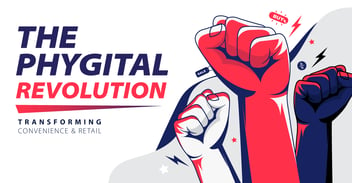Young Consumers Love C-Stores 2023. But Why?
Back in 2015, things were looking positive for convenience store retailers with Millennials (1977-1995) and Gen Z (1996 – 2015). Twenty-five percent of consumers ages 25 to 34 years old visited a C-Store almost every day. Over a quarter (34%) of 18-24-year-olds visited at least once per week. That kind of regular behavior is habit-forming and a recipe for booming business.

Then COVID-19 hit, forcing consumers to stay away from public places, shutting down office buildings, and reshaping consumer behavior. Nearly three years after the start of the pandemic response, online sales are still seeing the residual benefits of the lockdown. Online retail sales in the United States clocked an additional 400 billion dollars in 2022 sales when compared with online sales in 2019.
But post-COVID trends for convenience stores don’t seem to follow the same trend. Rather, Millennials and Gen Z continue to flock to their local haunts for food, drinks, gas, and cash. But why?
Mass Employment is a Boon for Convenience Retail
US employment rates reached an all-time high in May of 2022. And, despite rumors of massive layoffs in the technology industry, the numbers still look good for today’s workers. As recently as last November, labor statistics showed over 10 million job openings or 1.7 available positions for every person currently looking for work.
These statistics might seem bad for employers facing staffing shortages and high turnover rates. But, when it comes to overall convenience store sales, high employment rates are a good thing. Why?
Full-time employed workers face more time constraints. They have to balance working hours with their daily life, often including family obligations and child care. A majority of full-time workers also face a daily commute to and from the office. Even hybrid workers have commute time at least two days a week. Employees with children add additional drive time as over half (54%) of US parents opt to drive their children to school. Some school districts are even paying parents to make the additional trip to drop their kids.
So, it’s hardly surprising to see that busy Millennials and Gen Z, today’s full-time workers and parents, are looking for fast convenience. Convenience stores, especially those offering fast-food options offer an easy balance between saving time and budget constraints. Nearly half (43%) of consumers between 18 and 29 purchase more convenience store food than in 2018. Similarly, recent studies show food service is now nearly a quarter of total convenience store sales nationwide.
Post-COVID is STILL Looking Good for Convenience Retail
Today, 25% of consumers age 30 to 44 years old grab convenience store food five or more times per month. Another 20% of those 18 to 24 years old purchase c-store food three to four times per month. Overall, a quarter of Americans spend at least $6-10 per week on convenience food. Younger consumers spend closer to $10 or $15 per week.
It’s not just food service making the future look bright for c-store sales. Since COVID lockdowns have eased, in-person retail has started booming again. Today, over 82% of payments are being made in person. So, consumers aren’t just ordering DoorDash or UberEats from the corner store, they’re walking in to grab what they want.
Overall visits to convenience retailers by Millennials and Gen Z are even higher today than they were eight years ago. Today over 60% of younger consumers stop into their local shops at least once per week.
Despite COVID lockdowns, inflation, and general economic turmoil, convenience stores continue to be a trusted and reliable resource for today’s young consumers. Today’s c-stores are upping their game – offering more variety, fresher faire, and Bitcoin along with trusted staples like beverages, jerky, and ATM access. And with an economy looking to maintain widespread employment, convenience stores are in a prime position to be the life preserver busy Millennials and Gen Z need.




